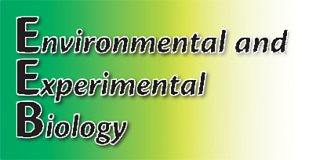
On-line: ISSN 2255–9582

| Faculty of Biology, University of Latvia | ||||||

|
Hard copy: ISSN 1691–8088
On-line: ISSN 2255–9582 Env Exp Biol (2010) 8: 49–58
|
|||||

|
About the Journal | Retractions | Open Access | Author Guidlines | Current Issue | Archive |
|
Environmental and Experimental Biology |
Env Exp Biol (2010) 8: 49–58 |
The aim of this study was to describe bryophyte communities on three substrate types (living tree stem, decaying log, forest floor) in natural deciduous tree forest stands in a small-scale heterogeneous habitat. In total, six liverwort and 42 moss species were recorded. Bryophyte community composition and species richness were strongly related to forest stand properties (forest age, soil moisture, and tree species) and substrate pH value. Most of the recorded woodland key habitat indicator species occurred on living tree stems in Quercus robur and Tilia cordata forest stands. The highest bryophyte species richness was observed on decaying trees in the successional stage from epiphytic to epigeous species communities. As the forest floor layer was not suitable for epigeous bryophytes on Ozolu Island, many of these species occurred on decaying logs.